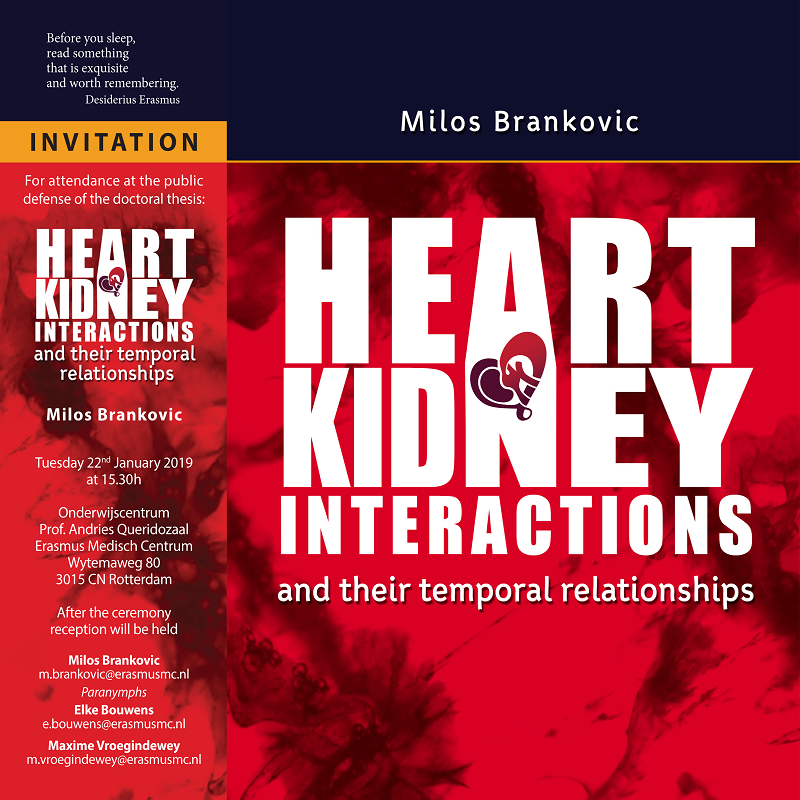This thesis describes heart – kidney interactions in patients with acquired heart disease. It was guided by four main objectives.
- To perform a critical appraisal of dynamic prediction modeling and interaction testing in clinical studies.
- To investigate how temporal trajectories of various kidney markers (glomerular function: plasma creatinine and cystatin C; and tubular damage markers: urinary NAG and KIM-1, and plasma and urinary NGAL) relate to clinical prognosis in patients with chronic heart failure (HF). Moreover, in this context we explored the predictive utility of 29 new emerging HF biomarkers measured repeatedly during long-term (years) progression of HF.
- To examine the dynamics of renal functioning during and just after acute coronary syndrome (ACS), as well as their predictive value for clinical prognosis. Kidney markers, cystatin C and NGAL, were also related to the coronary atherosclerotic burden in ACS patients by performing intravascular ultrasound (IVUS) virtual histology imaging of the patients’ non-culprit coronary vessels, and were related to clinical prognosis as well.
- To evaluate the relationships between guideline-recommended HF medication adjustments and specific biomarker profiles, NYHA functional status and adverse clinical outcomes of patients with chronic HF during their long-term outpatient follow-up. In patients undergoing heart transplantation, we examined the relationship between preoperative right heart hemodynamic parameters and postoperative acute kidney injury. Finally, we used our 23-year long registry data of patients admitted for acute HF to assess the temporal trends of short- and long-term patient survival in relation to the presence of renal dysfunction and anemia.
To find out more go to the book App.


